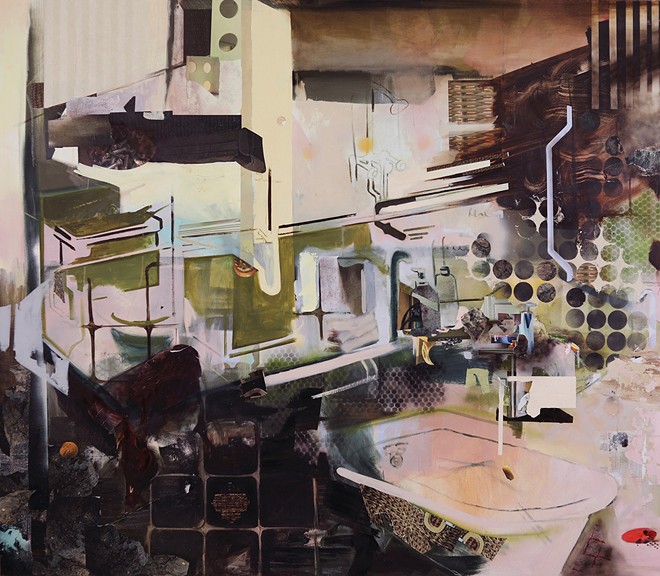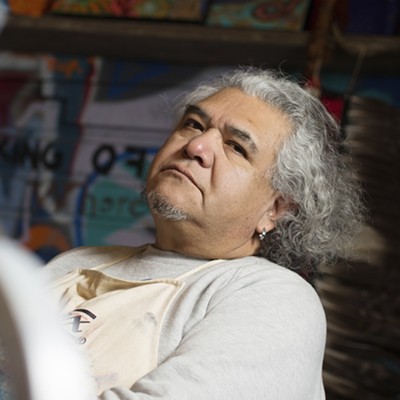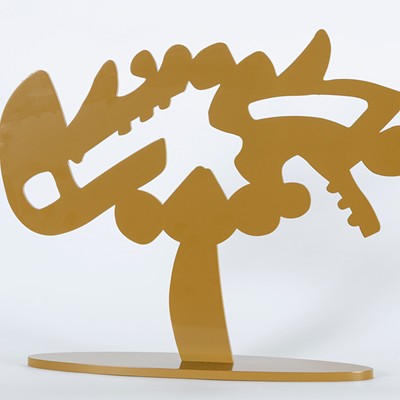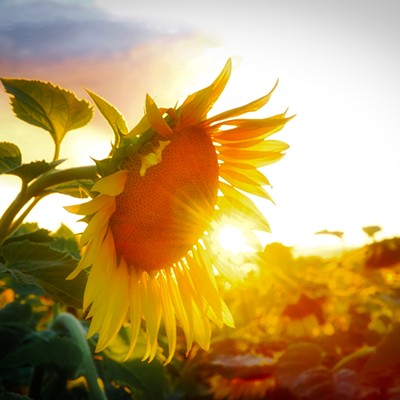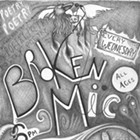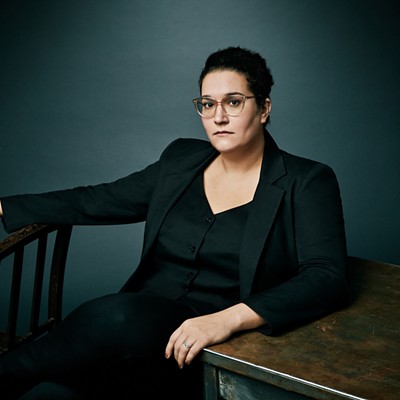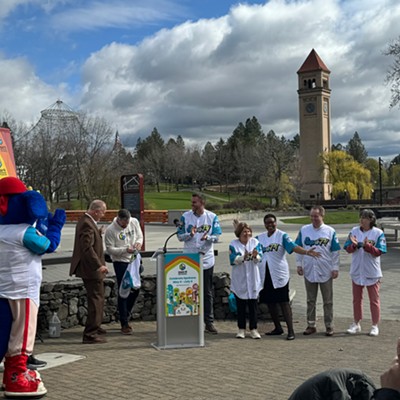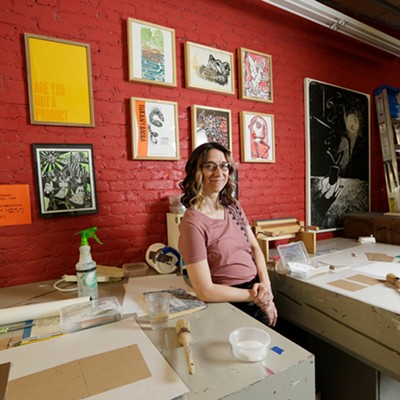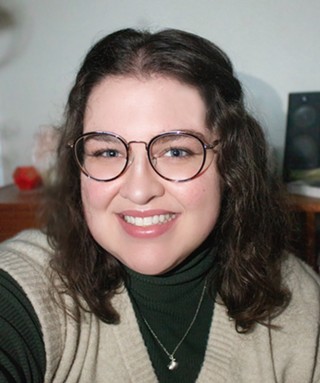Art transports us to places we could never imagine — artist Emily Somoskey didn’t intend for her work to become pandemic commentary, but her 8-by-6-foot mixed media collages bring back the tumultuous feelings of the early 2020 lockdown for many observers and will be on view at the Marmot Art Space on Fri, Oct. 1.
INLANDER: How did you get started creating art?
Emily Somoskey: I’ve been making art for as long as I can remember. I would say it was probably when I took my first art class in high school that I started to realize I enjoyed making and creating art. I decided to pursue that in college as well. Along with making art, I realized that I love sharing that knowledge of it with others. I see myself as both an artist as well an art educator. Being able to teach now at Whitman College and continue my work while also teaching is such an amazing opportunity. I’m learning from my students and I’m in an environment where I’m constantly immersed in art, I couldn’t ask for anything better.
What methods or techniques do you use to create your works?
I have two tracks that I use to create my art. My main process is mixed media on stretched canvas where I use a wide variety of different mediums: collage, digital prints, oil paints, acrylic pants, and various drawing materials. All of these are either integrating with one another or standing separately. That then creates this play between being able to recognize something on the canvas and another element being completely ambiguous. It complicates how we look at it aesthetically. Digitally, I create collages on photoshop and print them out on photo paper and use them in the collage process. I’m creating these layered spaces on a flat surface. I’m constantly trying to balance two very different processes. I really like to showcase ‘difference’ in my work. In my mixed media work, that difference is very evident, but digitally not so much. So melding those two mediums together makes everything less direct and straightforward. I see my mixed media pieces as more of “how much can I fit into this piece?” I create layer upon layer and challenge myself while still balancing a sense of openness and not having it feel overwhelming. The large scale helps with not making the art so dense. That way there’s room for the elements to open up a bit more than if they were on a smaller scale.
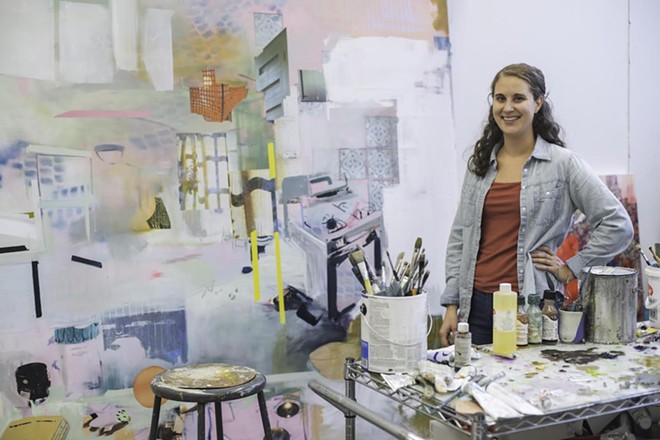
Are the materials that you use to create these paintings tied to the ideas that you wish to portray?
Yeah, I would say that the way that I use so many different materials together is reflective of how I see the complexity of the world that we live in. All of these differences are co-existing on the canvas. I see that as reflective of our world and how there are so many differences in our world: culturally, the things we’re interested in, and who we are as human beings. That’s a lot of the content in my work, trying to be reflective of the world we live in. It’s hard to do that with just one medium. Hard to get that sense of variety, difference and complexity.
Is there an aspect or defining moment of your life that influences your work?
I think that my work is constantly being informed by my experiences in life. I see a connection to growing up in the Midwest (Akron, Ohio); living there has informed a lot of the topics I engage with, a lot of the issues of domesticity, the home and the spaces that I choose to represent. It is informed by my background, but it’s constantly changing and evolving along with the changing times we’re in. It’s hard not to be reflective of the tension of the times we’re in. I’m always looking to bring that into my work. My work is taking a bigger shift right now, during the pandemic there has been so much tension, and my work has been starting to be filled with that. There’s a certain contrast between lightness and darkness. I wouldn’t look at my work and say this is about the pandemic, but those feelings are in there without being totally illustrative.
With the COVID-19 pandemic many people are reevaluating their relationships with the spaces they reside in. Have the meanings of your paintings changed over time for your audience or for you personally?
It is interesting looking back, there are so many elements within [the paintings] so it’s interesting to hear the things that stand out to people. I try to have a certain amount of openness, so there’s room for different interpretations. That’s what is most exciting to me is how it can be interpreted differently throughout different times and different people. I think right now, going back to that word of tension, some elements that I incorporate give a feeling of not being fully settled. My work deals with so many different pieces, parts and elements so I want it to feel like things are constantly moving and shifting. We are currently in the midst of that. We’re looking for stability. I think about that with my work, these spaces that I create don’t feel settled or fully stable. That tends to make people feel uncomfortable, but at the time I made [these pieces] I didn’t have those emotions attached. I didn’t really think about how at that time those things can be associated with being ungrounded and not having a solid stable understanding of the world, but now I definitely see that more and more.
Emily Somoskey • Fri, Oct. 1 from 5-7pm • Free • Marmot Art Space • 1202 W Summit Pkwy. • emilysomoskey.com

